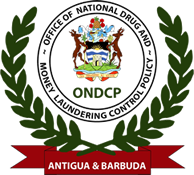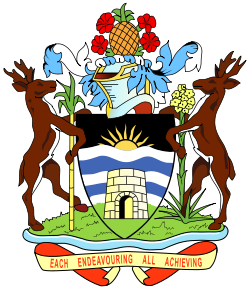Introduction
Although Antigua and Barbuda is not a significant producer of illicit drugs, however, it is clear that these substances transit the islands and have created a user population. The Island does not have significant resources to effectively patrol the quays and many inlets. As a result, the government sought the assistance of the OAS in 2000 to assist in the creation of a National Anti-Drug Plan that covered a five year period. The consultation was undertaken with the assistance of the both Governmental and non-Governmental entities and the Anti-Drug Plan was created
Aim
The Anti-Drug effort is geared at but not restricted to drug education, drug abuse prevention and rehabilitation programs through the islands. This will directly target school age children, young adults, workplaces and drug abusers.
Justification
Antigua and Barbuda does not grow the coca plant, but does cultivate a small quantity of cannabis (cannabis sativa) mainly for local consumption, in the hilly and sparsely populated areas of the countryside. As a result of the geographical location of the islands with several quays and inlets, it is easily accessible to go-fast boats, yachts and other ocean-going vessels. In addition, international air traffic to and from the islands has been on the increase. Drug traffickers utilizing both air and sea routes have been arrested on numerous occasions.
The tourism industry, which is the pillar of the island’s economy, has suffered many setbacks due to the ravages of Hurricanes over the years. With the state of the economy Antigua and Barbuda is not able to fully fund a National Anti-Drug Strategy Plan. Therefore, the plan requires international and regional assistance and financial support at all levels.
Orienting Principles
The National Anti-drug Strategy is organised in accordance with the hemispheric Anti-Drug strategy within the Organisation of American States. It is from this strategy that this milestone of principles will be the guide for its implementation. These principles must be present in each of the programs, projects and activities related, guiding the state and the civil society to reach the goals and results, and they are:
- Integrity – The quality of possessing and steadfastly adhering to high moral principles or profession standards.
- Co-responsibility – every one having shared in giving an account about a matter.
- Equilibrium – A physical state or sense of being able to maintain bodily balance.
- Social Participation – Everyone in a particular society taking part in matters that affect that society.
- Flexibility – The ability to change or be changed according to circumstances.
- Social Participation – Everyone in a particular society taking part in matters that affect that society.
- Flexibility – The ability to change or be changed according to circumstances.
Institutional Strengthening
It is recommended that the government create an institution with the necessary legal authority for the coordination of activities that straddle both the supply and demand reduction components of the current Plan. This new institution will afford a holistic assessment of the drug problem, affording prompt remedial action by stakeholders as considered appropriate.
Institutional Strengthening
The Plan recognizes the importance of an approach which involves the family, school, workplace etc, working together on health and wellness driven programmes, dealing with the three major components:
- Primary Prevention (awareness and education)
- Secondary Prevention (counselling/treatment)
- Tertiary Prevention (facilities aimed at rehabilitation for reintegration of addicts into society).
The plan also seeks to increase the number of field workers engaged in demand reduction, building an educated cadre of service givers. This human resource is essential for dealing with addicts through programmes of motivational counselling, treatment, follow-up and social reintegration of recovered addicts, and developing juveniles/young adults leading productive lives, reformed from drug use.
Supply Reduction
The Plan seeks to strengthen agencies with responsibility for law, order and public safety, being assigned with additional legislative and administrative authority to prevent the trafficking, dealing and use of illicit drugs to reduce the supply of illicit drugs available locally. With a better utilization of information, equipment and personnel, combating the drug trade and reducing drug use will be easier.
Control Measures
The plan also seeks to contribute towards uniformity of sentencing of drug offenders controlling appeals against conviction and reduce sentencing and making court penalties stiffer. With respect to money laundering, the plan seeks to deprive drug traffickers and dealers of the benefits of hidden economic ventures.

